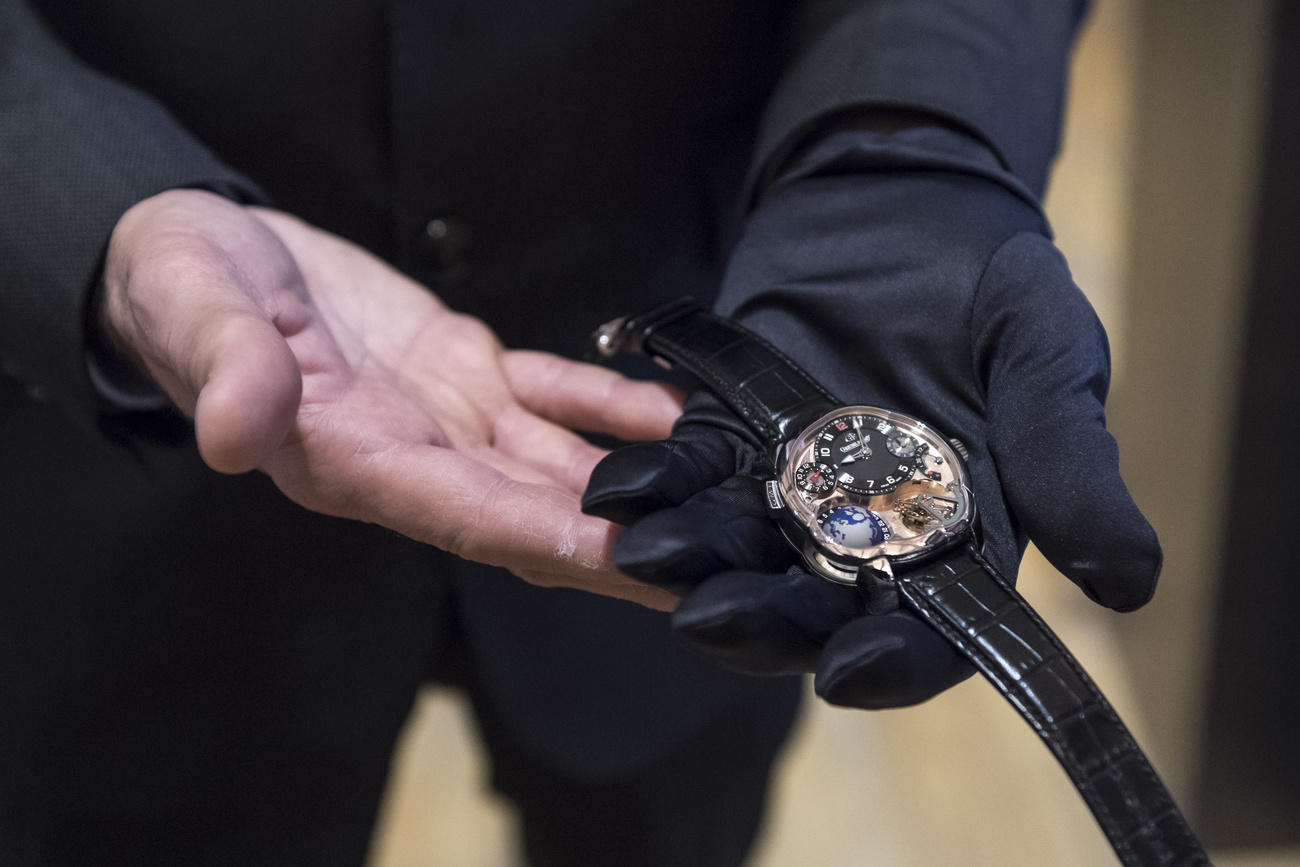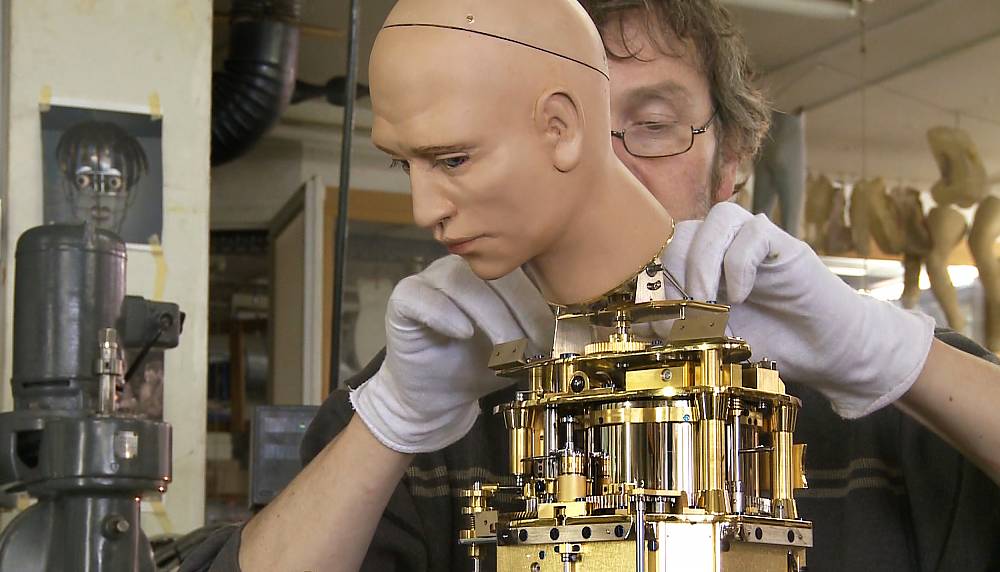
Five steps to keep the Swiss watchmaking industry ticking

After going through one of their worst years on record, Swiss watchmakers are hoping to get their heads above water in 2021. Here are the five main challenges that the industry will have to face in order not to sink into lasting depression.
Let’s start with the good news: 2021 will undoubtedly be a better year for Swiss watchmakers than the previous one. “We are expecting an upward trend, although there are still many unknowns. Everything will hinge on how the pandemic evolves, how fast vaccination campaigns are carried out and when global tourism starts to recover,” the president of the Federation of the Swiss Watch Industry (FH), Jean-Daniel Pasche, commented.
In 2020 the sector experienced the worst crisis of the last 80 years, with a drop in watch exports of around 25% (the final figures will be known in late January). The closure of many shops around the world and the shutdown of international tourism have taken a heavy toll on this flagship industry, which exports 95% of its output worldwide.
While the sector has so far managed to limit the damage at the human level – only a few bankruptcies and a 2.6% drop in watchmaking jobs were recorded last year – it could be facing difficult months ahead, despite a gradual upturn in activity. “Massive State aid has masked the true extent of the crisis suffered by the branch. Waves of layoffs and the demise of dozens of brands can be expected once short-time work and business loans have ended,” warned Grégory Pons, a French journalist based in Geneva who specializes in watchmaking.
In 2020, the only real good news for Swiss watchmaking came from the Far East. While all global markets plummeted, exports to China followed the reverse trend and increased by nearly one fifth compared to 2019. Thanks to tough measures and a harsh lockdown, China was able to reopen its shops already in the spring. Deprived of foreign travel, Chinese consumers turned to buying watches at home.
“This is a new phenomenon, which is not just linked to the coronavirus crisis. There is a clear desire by Beijing to boost local trade, with the establishment of duty-free zones for the Chinese population, in particular on Hainan island,” explains Jean-Daniel Pasche.
This eastward shift is expected to continue, especially since international tourism is unlikely to resume before the end of the year. This comes with the risk of more disappointments ahead for Swiss watchmakers, as happened after the boom in exports to China in the early 2010s.
“This dependence on the Chinese market is dangerous. Part of the Chinese elite has made a lot of money out of this crisis and is investing some of it in Swiss watches. But just wait for the bubble to burst,” warned Grégory Pons. He fears that Beijing will launch another major anti-corruption campaign, with the unstated aim of promoting the sale of Chinese watches, to the detriment of Swiss timepieces.
For slightly over a decade, Swiss watchmakers have banked heavily on the rapid growth of emerging economies, particularly in Asia, to gain market share. This comes at the expense of often neglecting their traditional clientele in Europe and North America. As a result, Swiss watches have come to be seen as outdated by Western fashionistas. “Swiss watch brands are disappearing from the mental universe of Western consumers,” Grégory Pons said.
Meanwhile, connected watches and those produced by fashion brands such as Guess, Puma and Armani are highly popular among trendy youth. Both fun and affordable, “smartwatches” have almost superseded the Swatch and other inexpensive “Swiss Made” watches on the watchmaking scene.
A single statistic illustrates this phenomenon: although it marketed its first Apple Watch only in 2015, the Californian multinational now sells twice as many watches as the whole Swiss watch industry! “Swiss brands, for the most part are very conservative and endlessly turn out the same conventional and bland models. To persuade young consumers to opt for more traditional watches, they will have to be much more creative,” said Grégory Pons.
This fierce competition in the entry-level range – that is, watches sold for less than CHF600 ($674) – is having a dramatic impact on the total number of timepieces produced in Switzerland. In the first 11 months of 2020, Swiss watchmakers exported just over 12 million pieces worldwide – that is, nearly three times fewer than in the early 2000s.
“This is the main problem for Swiss watchmakers. An industry cannot rely solely on the high end of the market which. With very few exceptions – such as Rolex (one million units) and Omega (750,000 units) – this leads to limited volume. To keep the machinery running and to finance investments, what you need is volume,” says Olivier Müller, expert watchmaker at LuxeConsult.
Jean-Daniel Pasche is also convinced that the Swiss watch industry must keep manufacturing low-priced watches even if the production costs and the strength of the Swiss franc are major disadvantages. “Volume creates activity and helps keep know-how and jobs in the sector,” he notes.

More
Swiss watchmaking: where things stand
The forced closure of many watch shops around the world has opened the eyes of even the most die-hard watchmakers to the importance of online sales and communication – and this also goes for brands that sell their products at tens of thousands of francs apiece.
“It is obviously an advantage to be able to buy online when the shops are closed. More generally, this distribution channel meets the growing needs of part of the population,” said Jean-Daniel Pasche. For example, between April and September, the Geneva luxury group Richemont achieved 7% of its sales via the Internet, against 2% the previous year.
In a matter of a few months, brands have implemented digital strategies that were initially planned to take several years. The use of new means of communication has also enabled watchmakers to connect with their end customers.
Without calling into question the importance of shops and direct contact, this rapid development is helping to shake up an industry that has so far been very resistant to major digital change. But it still took until 2020 and the final push of a virus from China for this to happen.
Translated from French by Julia Bassam.

More
Can Swiss watchmakers survive another century of disruption?

In compliance with the JTI standards
More: SWI swissinfo.ch certified by the Journalism Trust Initiative






































Join the conversation!